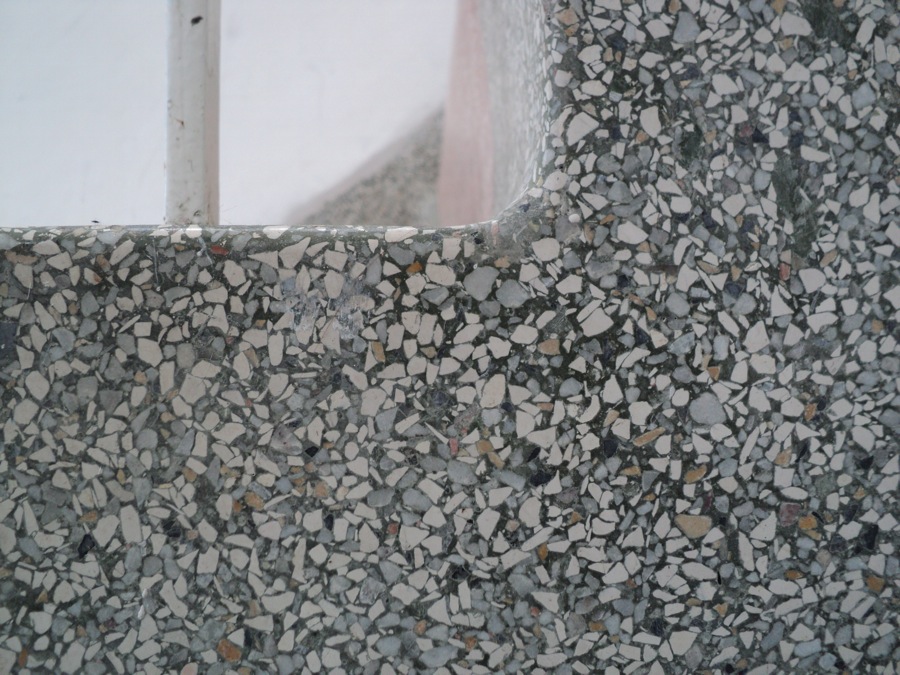On Aggregate
Your Slab contributor, cognizant of the fast-approaching quarter finals of the Champions League, and always conscious of the many Tottenham Hotspur fans out there among the readership, considers it time to look at things on aggregate. When it comes to buildings, aggregate is the term for any fine material that is used to bulk up the volume of a composite, such as concrete. In this sample, taken from the front of an art gallery on Rue Bonaparte in Paris, the shards of black and white are the aggregate.
Generally, I would associate such large-scale use of aggregate with certain institutional buildings of the 1960s and 1970s, such as this industrial school, now an art college, in Dublin.
The suburban slouch of this low-slung staircase, where real estate is not at a premium, contrasts with the verticality of the next staircase, from a Dublin city-centre hospital refit of the same era.
The material itself is of course not made for close inspection. Its effect is intended to be aggregate, you might say. But close inspection reveals a scattery world of disorder and chance, where the distribution of elements follows no pattern.
These samples provide good illustrations of how random arrangements appear to us. A truly random array of elements has a high chance of containing clusters of the same element, and of what seem to be patterns or geometrical arrangements. Of course, by definition there is no arrangement in something that is random – it is merely our pattern-seeking tendency that sometimes finds arrangements within them. It is when clustering and incipient patterning are absent that we should suspect that a human hand has intervened and smoothed things out, ironically leaving a trace of itself in the very act of trying to do the opposite.
